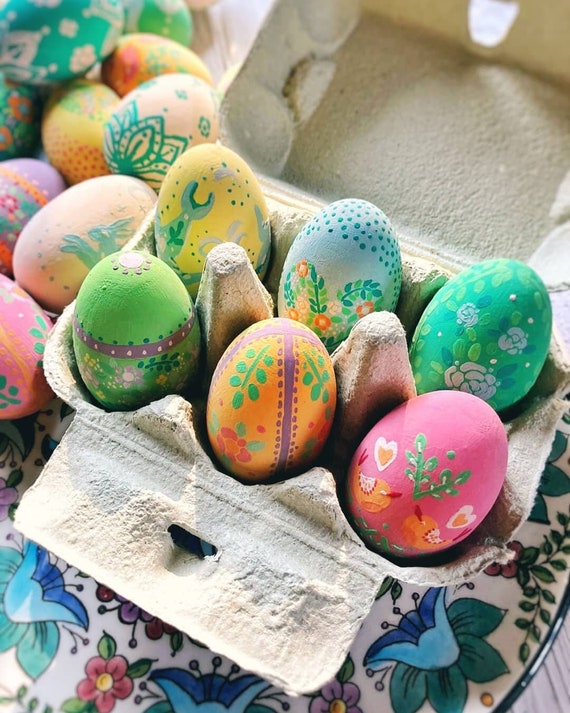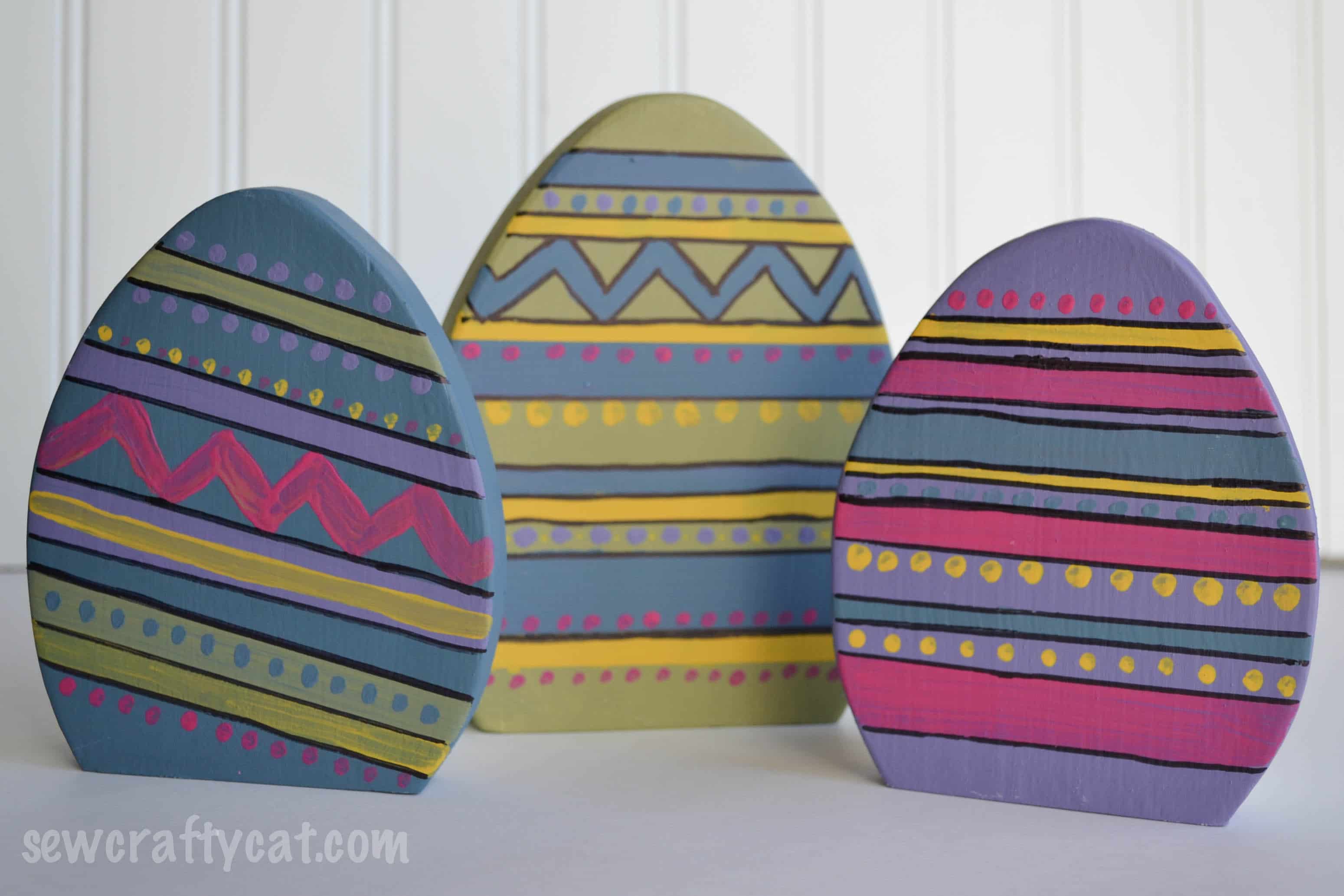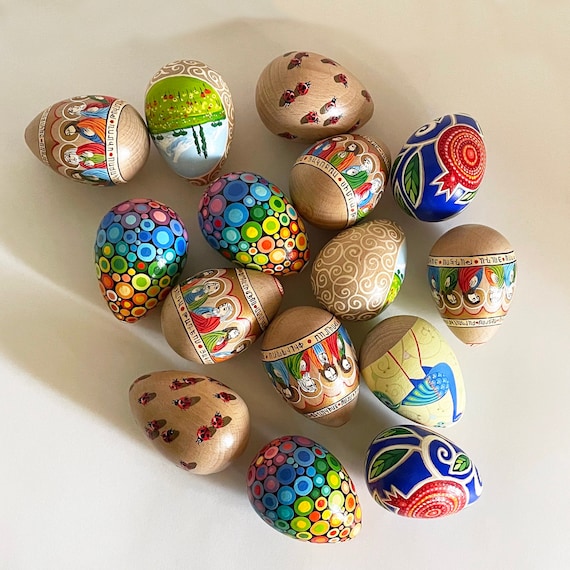As spring approaches, the air becomes filled with the promise of colorful blooms, longer days, and, of course, Easter celebrations. Among the most delightful symbols of the season are Easter eggs, and nothing captures the essence of this holiday quite like wooden decorative Easter eggs. In this article, we will explore everything you need to know about these charming pieces, from their history and design to DIY tips and care instructions—ensuring your holiday is filled with joy and creativity.
The Rich History of Easter Eggs
Eggs have long been a symbol of new beginnings and rebirth, and their association with Easter can be traced back to ancient cultures. While the practice of decorating eggs is common in many cultures, wooden Easter eggs have a unique charm that combines both art and tradition.
Early Beginnings
The tradition of using eggs during Easter started with early Christians using chicken eggs, eventually evolving to include different materials. Wooden eggs became popular in regions like Eastern Europe, where artisans would skillfully craft them into decorative pieces.
Why Choose Wooden Decorative Easter Eggs?
Wooden decorative Easter eggs offer numerous advantages over traditional egg options. Here are a few reasons why they are a fabulous choice for your celebrations:
- Durability: Unlike real eggs that can break, wooden eggs are sturdy and can be reused for many years.
- Eco-Friendly: Wooden eggs are generally made from sustainable materials, making them an environmentally friendly option.
- Artistic Expression: With a variety of designs and colors, wooden eggs can showcase your personal style and creativity.
- Safe for Children: Wooden eggs are safe for children, eliminating the risk of mess or injury associated with real eggs.

Types of Wooden Decorative Easter Eggs
Wooden decorative eggs come in various types, each adding a unique flair to your Easter decor. Here are some popular types to consider:
Hand-Painted Wooden Eggs
Hand-painted wooden eggs are true works of art. Artisans often use vibrant colors and intricate designs to create one-of-a-kind pieces. You can find themes ranging from traditional floral patterns to whimsical characters.

Carved Wooden Eggs
For a more rustic look, carved wooden eggs showcase natural wood grains and textures, making each piece unique. These eggs may have simple shapes or intricate carvings that tell a story or represent cultural traditions.
Decoupage Eggs
Decoupage involves applying paper cutouts to wooden surfaces, creating a stunning mixed-media effect. This method allows for endless customization, as you can use your favorite fabrics, prints, and colors.

DIY Kits
If you enjoy crafting, consider investing in DIY kits that come with unpainted wooden eggs and supplies to bring your vision to life. This is a great way to spend time with family while creating personalized decorations.
DIY Tips for Crafting Your Own Wooden Easter Eggs
Creating your own wooden decorative Easter eggs can be a rewarding experience. Here’s a step-by-step guide to help you get started:

Materials Needed
- Unfinished wooden eggs
- Sandpaper (for smoothing edges)
- Acrylic paints or markers
- Paintbrushes
- Sealer (optional)
- Decorative embellishments (glitter, ribbons, etc.)
Step-by-Step Instructions
- Prepare Your Workspace: Set up a clean, well-lit area to work on your eggs.
- Sand the Wooden Eggs: Use sandpaper to smooth out any rough edges and create a nice surface for painting.
- Paint Your Designs: Use your creativity! You can use stencils for intricate designs or freehand draw your patterns.
- Add Embellishments: Once the paint is dry, you can add glitter, ribbons, or other decorative elements.
- Seal Your Work: Applying a clear sealer can help protect your design and give it a polished finish.

Care and Maintenance of Wooden Decorative Easter Eggs
To ensure that your wooden decorative Easter eggs last for many seasons, proper care and maintenance are essential. Here are some tips to keep them looking fabulous:
Cleaning Your Wooden Eggs
Cleaning wooden eggs is simple. Use a soft, dry cloth to wipe off any dust or dirt. If more cleaning is required, lightly dampen the cloth with water, but avoid soaking the eggs.

Storage Tips
Store your wooden eggs in a cool, dry place. Use a padded container to protect them from scratches or damage when not in use.
Decorating Ideas for Your Wooden Eggs
Wooden decorative eggs can be used in various ways to enhance your Easter festivities. Here are some creative decorating ideas:
Centerpieces
Create a stunning centerpiece by placing your decorated wooden eggs in a decorative bowl or basket. Add some greenery or faux flowers for an elegant touch.
Hanging Decor
Attach ribbons or strings to your wooden eggs and hang them from branches, doorways, or windows. This creates a whimsical look that brings joy to your space.
Table Settings
Incorporate wooden eggs into your Easter table settings by using them as place card holders or as decorative accents on plates.
Comparison: Wooden Eggs vs. Traditional Eggs
| Feature | Wooden Eggs | Traditional Eggs |
|---|---|---|
| Durability | High | Low |
| Eco-Friendliness | High | Low (due to waste) |
| Safety for Children | Safe | Risk of breakage |
| Design Versatility | High | Limited |
| Reusability | Yes | No |
Pros and Cons of Wooden Decorative Easter Eggs
Pros
- Durability allows for long-term use
- Environmentally friendly option
- Safe for children
- Endless design possibilities
- Can be passed down as family heirlooms
Cons
- Higher initial cost than traditional eggs
- Requires some maintenance to keep looking new
- May not have the same classic charm as real eggs for some
Frequently Asked Questions (FAQs)
What materials are wooden decorative Easter eggs made from?
Most wooden decorative Easter eggs are made from sustainable wood sources, such as pine or birch, which are popular for their light weight and ease of painting.
Can I eat wooden Easter eggs?
No, wooden eggs are purely decorative. They are not edible and should be kept away from food items.
How do I store wooden eggs after Easter?
Store wooden eggs in a cool, dry place in a padded container to prevent scratches or damage until the next season.
Can I customize wooden eggs for special occasions?
Absolutely! Wooden eggs are perfect for customization. You can paint them for various holidays, birthdays, or other celebrations, making them versatile decorations year-round.
Where can I buy wooden decorative Easter eggs?
You can find wooden decorative Easter eggs at craft stores, online retailers, and artisan markets. Many local artists also sell unique handcrafted pieces.
Conclusion
Wooden decorative Easter eggs are not just ornaments; they embody creativity, tradition, and sustainability. By choosing to incorporate these charming pieces into your Easter celebrations, you create an atmosphere of warmth and joy that can be cherished by family and friends for years to come. Whether you opt for store-bought designs or craft your own, wooden eggs can bring a personal touch to your seasonal decor. Embrace the spirit of spring and add these delightful decorations to your festivities!